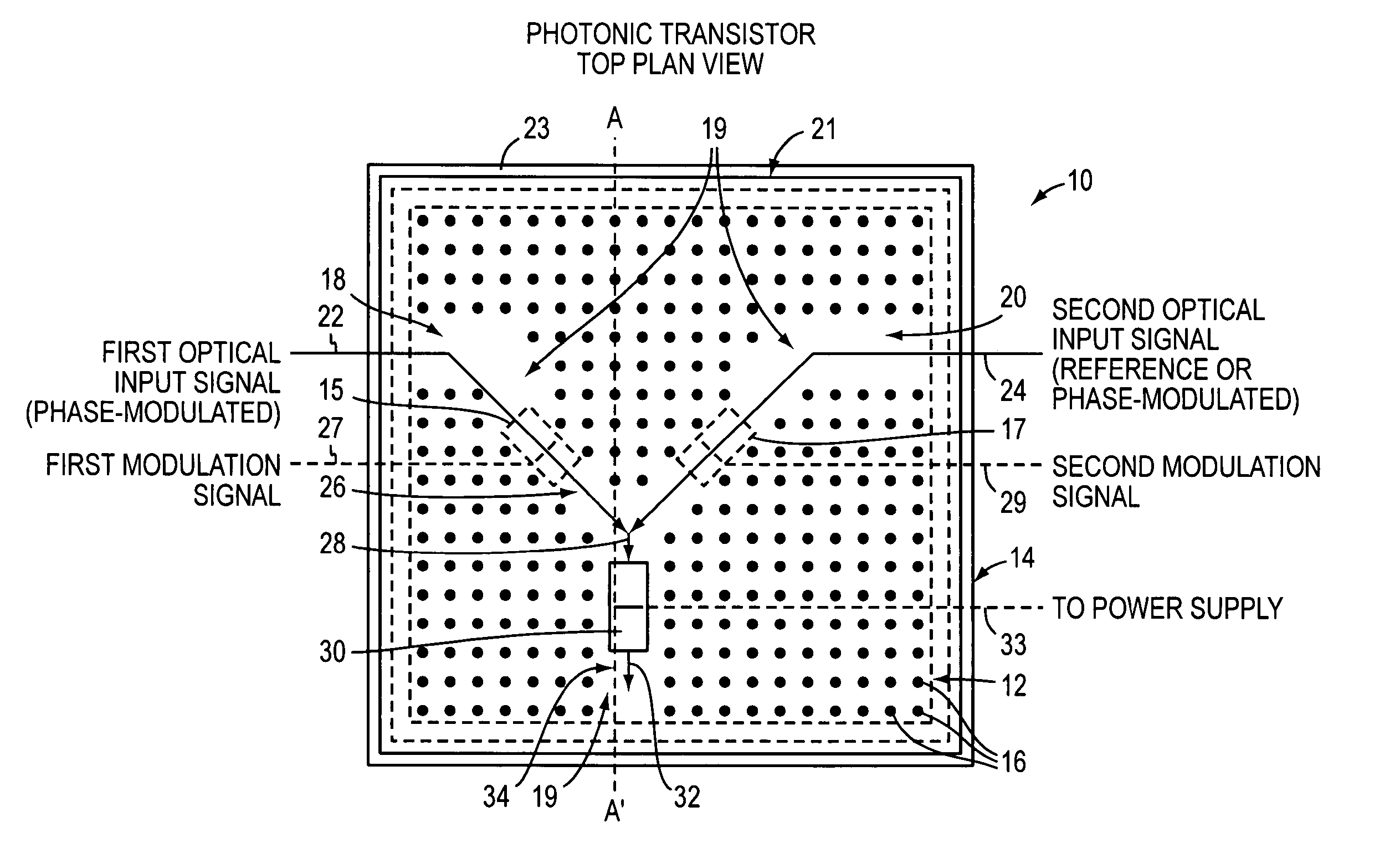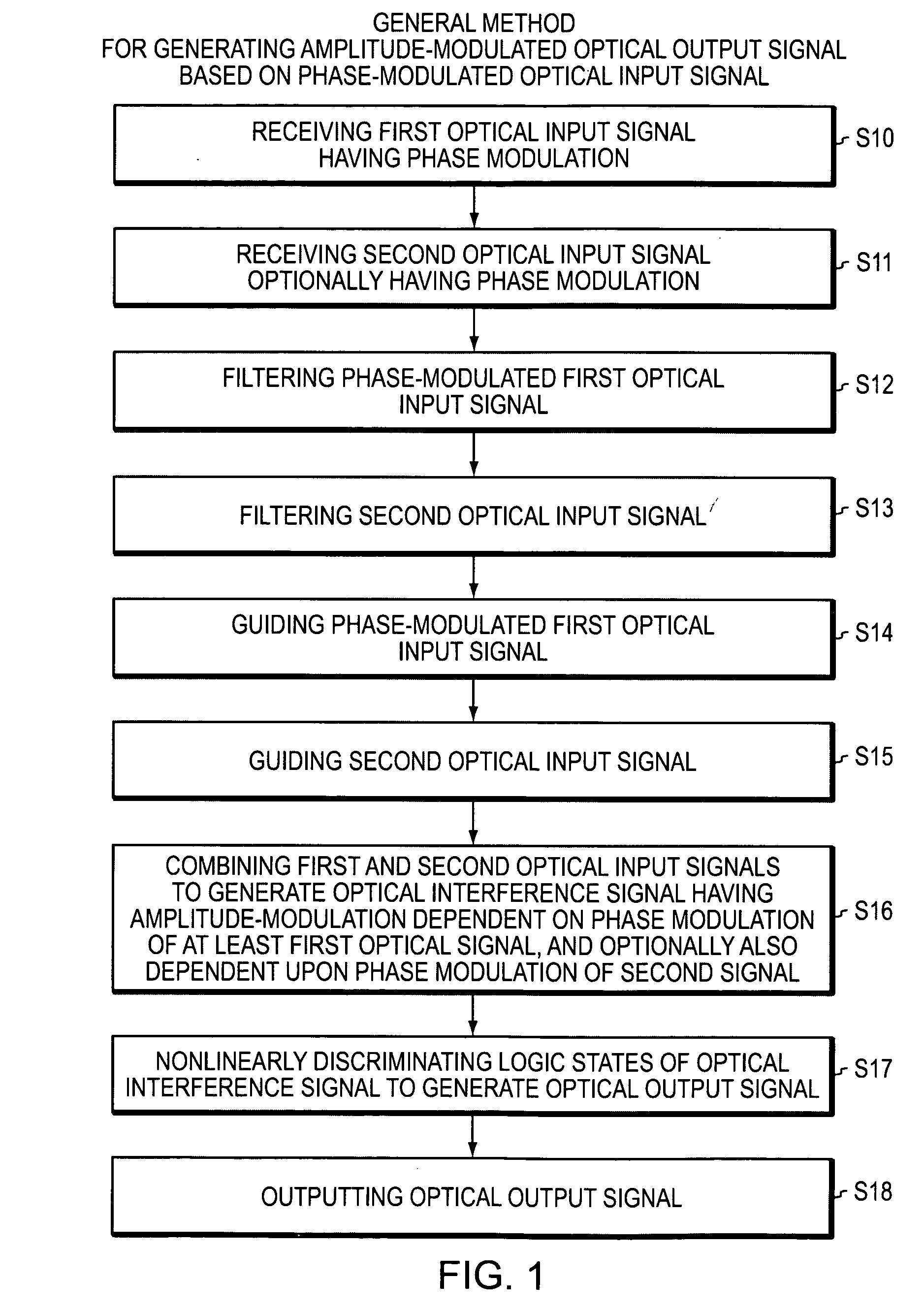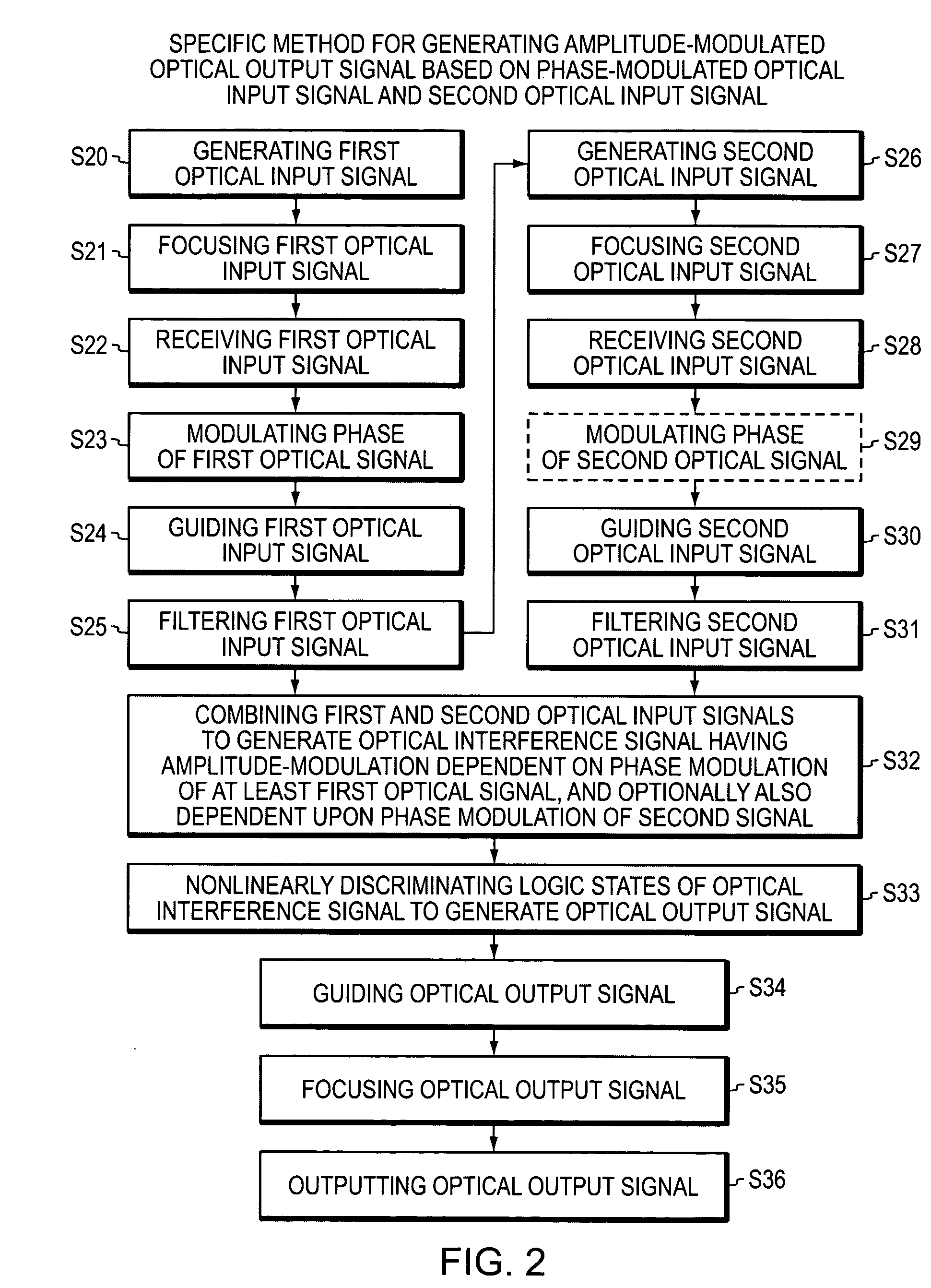Optical device and circuit using phase modulation and related methods
a phase modulation and optical device technology, applied in the field of optical devices, can solve the problems of affecting the stability of logic state representation, affecting the ability to represent logic state stably for as long as may be required, and affecting the performance of logic circuits
- Summary
- Abstract
- Description
- Claims
- Application Information
AI Technical Summary
Benefits of technology
Problems solved by technology
Method used
Image
Examples
Embodiment Construction
[0039] The present inventions now will be described more fully hereinafter with reference to the accompanying drawings, in which some, but not all embodiments of the invention are shown. Indeed, these inventions may be embodied in many different forms and should not be construed as limited to the embodiments set forth herein; rather, these embodiments are provided so that this disclosure will satisfy applicable legal requirements. Like numbers refer to like elements throughout.
Definitions
[0040]‘And / or’ means ‘one, some, or all’ of the things immediately preceding and succeeding this phrase. Thus, ‘A, B and / or C’ means ‘any one, some or all of A, B, and C.’
[0041]‘Downstream’ refers to a position or element that is further along an optical transmission path relative to a reference point. It can also used to refer to the direction of travel of light in an optical device away from a reference point.
[0042]‘Substrate’ is a workpiece or starting material upon which a photonic bandgap (P...
PUM
| Property | Measurement | Unit |
|---|---|---|
| phase | aaaaa | aaaaa |
| optical interference | aaaaa | aaaaa |
| phase modulation | aaaaa | aaaaa |
Abstract
Description
Claims
Application Information
 Login to View More
Login to View More - R&D
- Intellectual Property
- Life Sciences
- Materials
- Tech Scout
- Unparalleled Data Quality
- Higher Quality Content
- 60% Fewer Hallucinations
Browse by: Latest US Patents, China's latest patents, Technical Efficacy Thesaurus, Application Domain, Technology Topic, Popular Technical Reports.
© 2025 PatSnap. All rights reserved.Legal|Privacy policy|Modern Slavery Act Transparency Statement|Sitemap|About US| Contact US: help@patsnap.com



